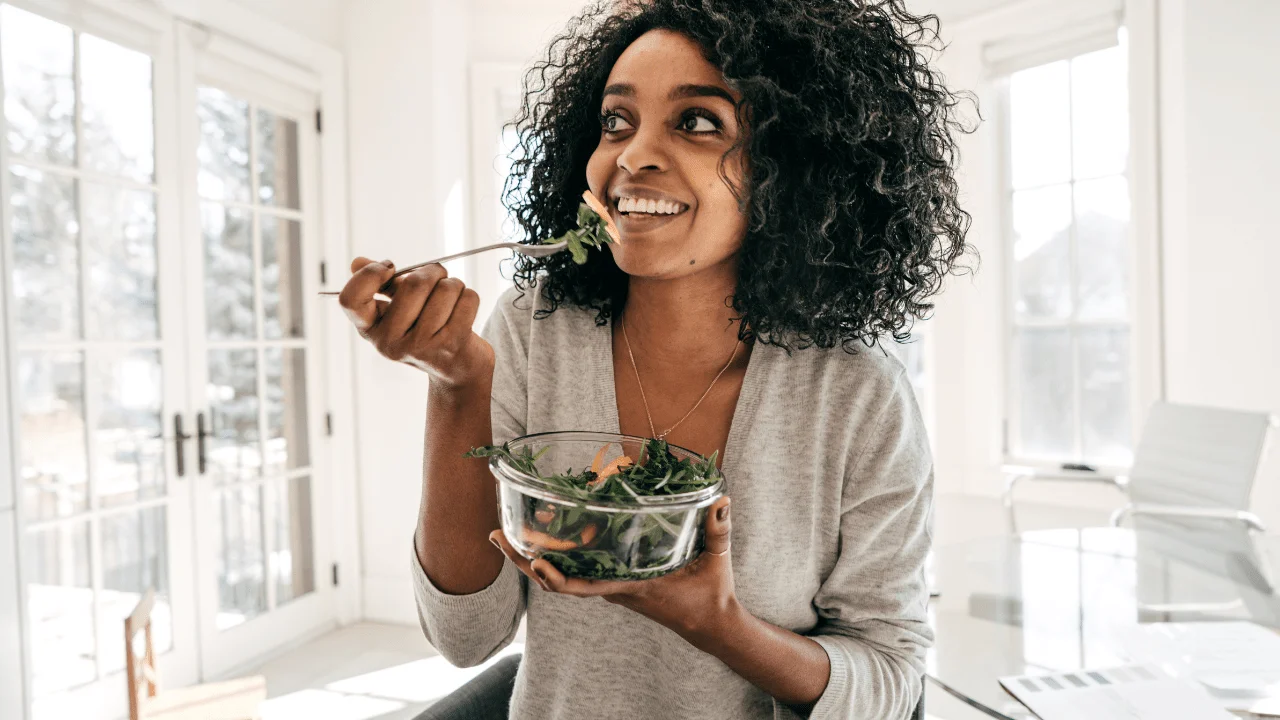
Fertility foods. You don’t have to wait until you’re pregnant to start eating well. In fact, following a healthy diet before you conceive can help boost your fertility, lower the risk of birth defects such as spina bifida and even reduce your chances of developing preeclampsia during pregnancy.
Fertility foods: Key nutrients to eat when you’re trying to conceive
As a mom-to-be, you’ll need a mix of healthy foods that are packed with nutrients, including:
Folic acid and folate
This B vitamin (B9) is one of the most important nutrients you can get before (and during) pregnancy. The Centers for Disease Control and Prevention (CDC) says that all women of reproductive age should consume 400 micrograms (mcg) daily to help prevent neural tube defects like spina bifida and anencephaly.
To cover your bases, you should make sure your prenatal vitamin contains 400 to 600 mcg of folate or folic acid (the synthetic form). You can also find folate and folic acid in foods like:
- Leafy green vegetables. Spinach, broccoli, bok choy, Swiss chard and kale are all good options. Sauté them in olive oil, and eat as a side dish or add them to soups, salads, casseroles and omelets.
- Fortified cereals. Look for breakfast cereals that contain 100 percent of the recommended daily value.
- Oranges and strawberries. These are so yummy, they’re easy to incorporate into your diet!
- Beans and nuts. Rich in fiber, eating beans and nuts can also help keep you regular.
Beyaynetu
Folate-rich recipes to try:
- Pomegranate Salad
- Mediterranean Salmon Sandwich
- Salad With Mango and Cucumber
Calcium
Calcium keeps your reproductive system functioning smoothly and may even help you conceive faster. It’s important to stock up now, because you’ll need a stable supply for your baby’s future teeth and bone health and development.
If your stores are low when you’re pregnant, your body will take the calcium from your bones and give it to the developing baby, which might raise your risk of osteoporosis (brittle bones) in the future. Try to get about 1,500 milligrams (mg) of calcium each day from sources like:
- Milk. The most popular source of calcium, one cup of milk contains 299 mg, or about one-third of your daily recommended intake. Bonus: It contains a splash of vitamin D, too. Calcium is also found in soy milk, almond milk and calcium-fortified juice. Have a glass as a snack or use it as the base for a smoothie.
- Yogurt. One cup of plain yogurt contains about 415 mg per serving — about a third of your daily recommended intake. Like milk, you can eat it plain or topped with fruit, or use it as the base for a smoothie.
- Cheese. A 1.5-ounce serving of mozzarella contains 333 mg of calcium, the same-sized serving of cheddar contains 307 mg, and one cup of cottage cheese contains 138 mg.
- Kale and broccoli. Vegetables like these are good non-dairy sources of calcium.
Calcium-rich recipes to try:
- Any Day Breakfast Parfait
- Banana Smoothie
- Macaroni and Cheese
Iron
This mineral — which shuttles oxygen throughout your body — will be super important when it comes to delivering oxygen to your baby, too. If you’re scheduled for a preconception checkup, ask your doctor about whether you should be screened for an iron deficiency, since too little iron could increase your baby’s risk of being underweight or premature. Women need about 18 mg per day, but your daily iron requirement will increase to 27 mg per day once you’re pregnant.
Keep in mind that your body absorbs iron better from food. Good sources include:
- Fortified breakfast cereals. One serving of fortified breakfast cereal contains 18 mg of iron.
- Lean meats. Beef, chicken and turkey all contain about 1 mg of iron per 3 oz serving.
- Spinach. A good source of iron, ½ cup of boiled, drained spinach contains 3 mg per serving — about 17 percent of your daily recommended intake.
Iron-rich recipes to try:
- Spinach-Ricotta Scramble
- Baby Spinach and Edamame Salad With Parmesan Shavings
Omega-3 fatty acids
Although many prenatal vitamins contain omega-3s, it’s also important to get your fill from whole foods while you’re trying to conceive. That’s because omega-3 fatty acids may help regulate key ovulation-inducing hormones and increase blood flow to the reproductive organs. You can find them in:
- Seafood. Fish that are high in fat, including salmon, anchovies, sardines and herring, are all good sources of omega-3s.
- Grass-fed beef. Beef from grass-fed cows contains higher levels of omega-3s than beef from grain-fed cows.
- Nuts and seeds. Walnuts, flaxseed and chia seeds contain omega-3s, as do plant oils like flaxseed, soybean and canola oils. Add them to your smoothie or sprinkle them on top of a salad for an extra crunch.
Omega-3 recipes to try:
- Salmon Salad
- Chicken Burgers
- Chicken Salad
Fiber
Adding more complex, slowly-digestible carbohydrates like fiber to your diet will keep you feeling full for longer. Plus, if you’re planning to get pregnant, increasing your fiber intake by 10 grams per day may lower your risk of developing gestational diabetes by 26 percent, according to one study.
Some good sources of fiber include:
- Whole grains. Wheat bread, bulgur, oats and quinoa all contain fiber.
- Fruit and vegetables. Peas, corn and broccoli are all good sources, as are pears, blueberries, raspberries and peaches. Eat the skins or peels for an extra dose.
- Beans and legumes. Lentils, black beans, kidney beans, lima beans, split peas and chickpeas are all packed with fiber. Add them to stews or salads.
Fiber-rich recipes to try:
- Steamed Sesame Vegetable
- Sunset Lentil and Sweet Potato Soup
Protein
Protein will help supply your baby with important nutrients. Your personal protein needs depend on a number of factors (including your activity level), but aim for several servings spread out throughout the day. Some or all can be plant-based (nuts, seeds, legumes … ).
Protein-packed choices include:
- Fish. High-fat fish like salmon is not only high in protein, it also provides a dose of omega-3 fatty acids.
- Lean meat. Poultry (like chicken or turkey) and lean beef are all good options.
- Black beans. One cup contains 15 grams of protein. Use them in a breakfast burrito or homemade veggie burgers.
Protein-packed recipes to try:
- Bakela kekel
- Crusted Chicken With Bakela Salsa
- Salmon
What to eat when you’re trying to get pregnant
Here are some of the best foods to add to your plate when you’re hoping to conceive:
- Spinach. In general, aim for four to five servings of vegetables a day. Leafy greens like spinach are a great choice: Spinach itself is a rich source of calcium, vitamin C, folate and potassium. Try adding a handful of spinach leaves to your smoothie, along with vanilla yogurt and a ripe banana.
- Oranges. Oranges are also packed with vitamin C, calcium and potassium. According to the Academy of Nutrition and Dietetics, vitamin C from citrus fruits can also help your body better absorb iron from non-meat sources. To work more into your diet, try drinking a glass of orange juice or topping your salads with a few slices.
- Milk. Dairy products contain protein, potassium and calcium. Try to choose products that are fortified with vitamins A and D as well. You can use fortified milk to make oatmeal or as a base for smoothies.
- Fortified cereals. Whether you’re opting for cooked cereals or the ready-to-eat kinds, look for products made from whole grains and fortified with iron and folic acid, and less added sugar.
- Chickpeas. Beans and peas are excellent sources of protein — and they also provide a dose of iron and zinc. Chickpeas in particular are loaded with protein, zinc, potassium and fiber. (Other good options include pinto beans, soybeans, white beans, lentils and kidney beans.) Use them to make hummus or bake them and sprinkle on a salad.
- Salmon. Salmon delivers a dose of protein, omega-3 fatty acids and potassium.
Healthy eating tips if you’re trying to get pregnant
Overwhelmed? Don’t be. You don’t have to eat a “perfect” diet — just tell yourself what you’ll tell your child some day: Do the best you can. And by starting to prioritize healthy eating habits now, it’ll be easier to stick to them once you get pregnant.
When in doubt, keep these strategies in mind:
- Eat more fruits and veggies. Produce provides hefty doses of vitamin A, vitamin C, iron, magnesium, potassium and fiber. Aim to eat four to five servings of veggies (at least two should come from leafy greens) and three to four servings of fresh fruit a day.
- Check in with an expert. If you have any dietary restrictions — whether you’re vegan or vegetarian or you follow a special diet for a chronic condition — ask your doctor about filling any nutritional gaps in your meals. (A registered dietitian can also help.) If you suspect that you may have an eating disorder — like bulimia or anorexia nervosa, for example — talk to your practitioner about enlisting the help of a health professional and a support group.
- Practice good (food) hygiene. Food poisoning is risky for anyone, but it’s especially dangerous when you’re pregnant. And some foodborne illnesses can affect your baby’s health even before you conceive.
- Pick smart seafood. Both the Environmental Protection Agency (EPA) and the Food and Drug Administration (FDA) recommend that women who are trying to conceive eat 8 to 12 ounces of low-mercury fish per week. Some seafood to avoid includes swordfish, tilefish, king mackerel and shark, but many choices you’ll find out there (salmon, canned light tuna, cod, shrimp …) are a-okay.
- Don’t skip meals. Right now, you might prefer to sleep through breakfast or work through lunch, but once a baby is on board, you’ll need a steady stream of nutrients throughout the day. Take a look at your schedule now and build in time for three complete meals a day.
- Cut back on caffeine. Despite what you may have heard, pregnant women can drink coffee, but moms-to-be should aim for no more than 200 milligrams of caffeine a day, or around one daily 12-ounce cup of coffee. If your usual order is a grande or venti, consider easing up on the caffeine intake now instead of later.
- Don’t smoke. Now’s a great time to quit if you do light up. Using tobacco can make it harder for you to get pregnant — and once you are pregnant, it can increase risk of miscarriage.
- Limit alcohol. A few glasses of wine may make baby-making more enjoyable, but too much can also make it harder to conceive. It’s smart to limit yourself to a couple glasses of alcohol a week while you’re trying, and abstain entirely if you suspect you’re pregnant, since alcohol can harm a developing baby. Best to stick with a mocktail.
Read more about


Add a Comment